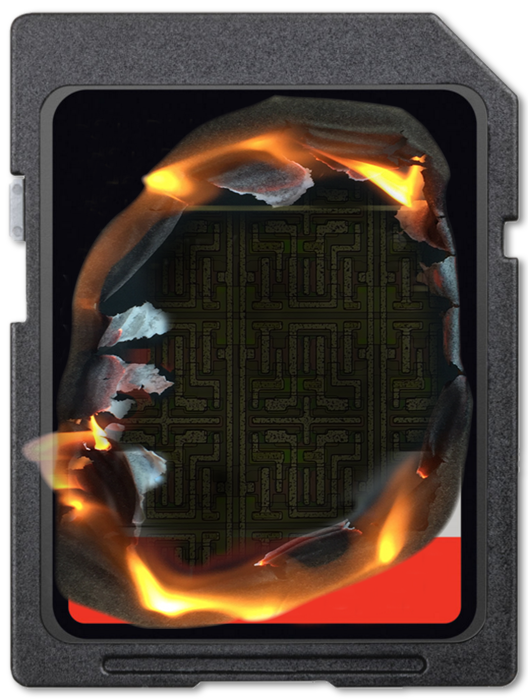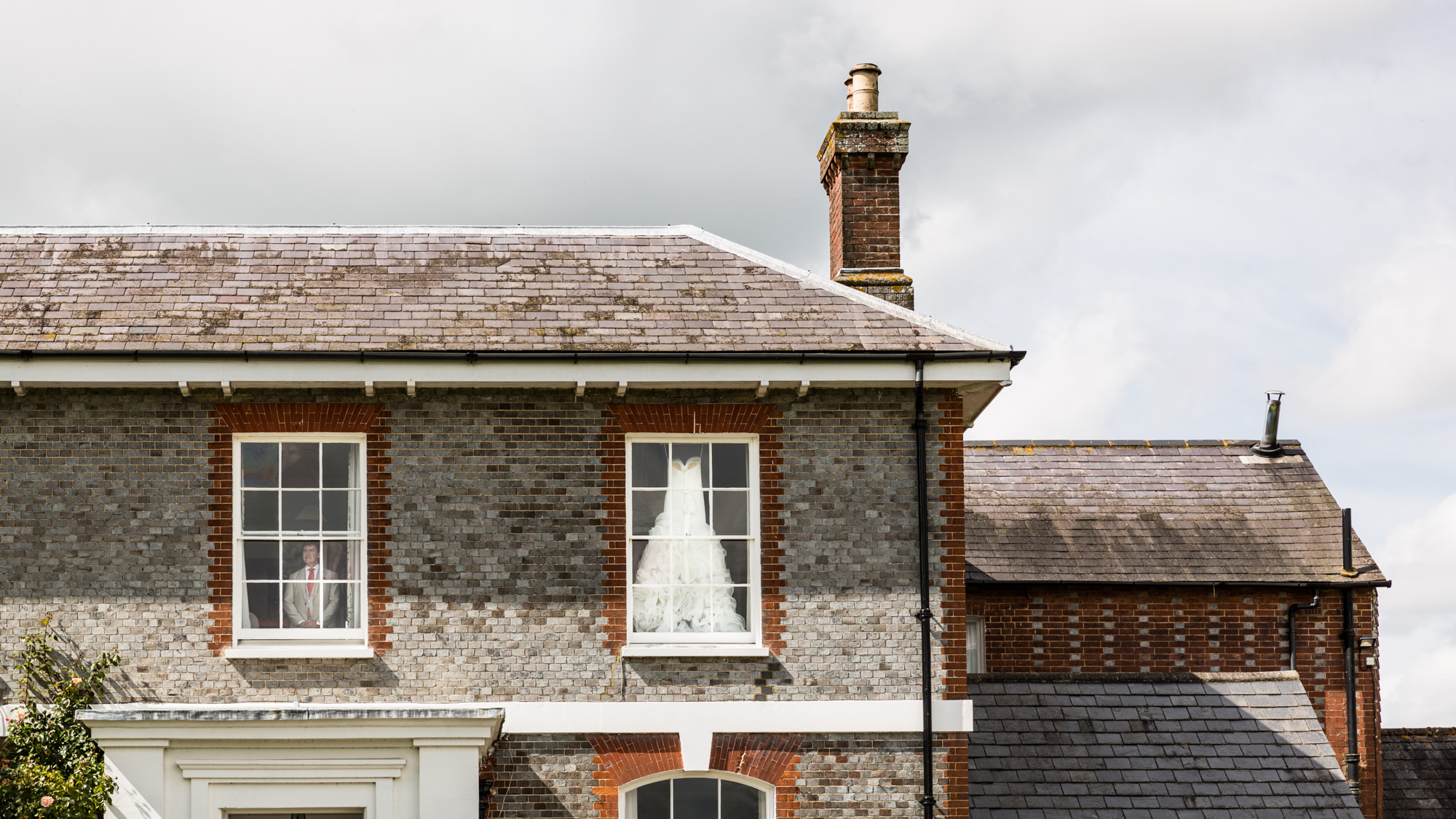As a professional photographer, doing everything in your power to avoid data loss or corruption is part of your job. Many years ago, I sent my film to the lab and waited a day or two on pins and needles while it was being processed, hoping nothing bad would happen to that film. In many local photo labs, complex chemical processes were often overseen by pimply faced kids with little to no experience and shipping film to a extreme pro lab was just as scary because of the transit. Occasionally, the ball got dropped and film got destroyed. I once had a lab rip a roll of film from end to end, leaving one usable frame out of 36 (I have no idea how). More frequently though, photographers would set their cameras incorrectly, with no way to tell for sure what they had done, until the film came back with nothing on it. Solution? Reshoot.
If you shoot weddings like I do, you know that is just not an option.

Of course, some photographers still shoot film, or have gone back to it (don’t get me started). While more reputable labs, have a professional overseeing the chemistry with very few mistakes, photographers are still waiting on pins and needles for FedEx or UPS to safely deliver their film to those reputable professional labs (and no, there isn’t a reputable lab in every large city, despite their claims). It is hard to argue that we haven’t taken a major step forward with digital technology. Today you can fire the shutter once, get two duplicate images on two separate cards, look at the image on the back of your camera to make sure it’s right, download it to a RAID 1 hard drive (I use the CRU Tough Tech Duo) which makes a fourth duplicate instantaneously, then upload a backup to a cloud service which makes a series of backups across its servers throughout the world. And all of this can be done before your assistant can drive to the nearest FedEx, or local Film Lab.
Even with these advances, things can go horribly wrong. Only now, instead of losing a roll of film with 36 exposures, there’s the potential to lose hundreds and hundreds on one card. And when you capture tens of thousands of images in a month, it’s only a matter of time before fate catches up with you! Fortunately there are a few simple steps you can follow to protect yourself from digital catastrophe.
Ten Tips to Avoid Data Loss
- MORE CARDS: Always carry more than enough cards for the entire shoot. Downloading and reusing cards at a shoot is just begging for trouble. This is so basic that it is hardly worth mentioning, but if you are guilty of it, you need to stop and seriously re-evaluate your professional practices.
- FORMAT UP FRONT: Another simple way to avoid data loss is to format all your cards before you start shooting. I format all of the cards I am using before I leave the studio. That way, if I find a card with no capacity, I know I shot it that day.
- INSTITUTE A SHOT SYSTEM: Create and adhere to a system for designating full cards. I use a plastic, hard sided weather resistant card case. When I load it, I put the blank cards in face up and after they are shot, I put them in face down. And it goes without saying that everyone on your team must follow the same practices, so there are no accidents.
- KEEP YOUR CARDS CLOSE: To avoid lost or stolen cards, I keep my case for the day in my front pocket or in a sling bag. Under no circumstances is it professional to set your cards down, place them loosely in a coat pocket, or leave them in a “safe place” off your your immediate person. Think of that case of cards as being worth – like – your whole professional career.
- DO NOT DELETE IN CAMERA: Never delete images in the camera. This is just begging for data corruption. A freshly formatted card makes all of it’s capacity available to the camera for storage. Once you delete a file, the camera starts breaking images up and writing them to the disk in unpredictable ways — a little here, a little there. This can have a negative effect on disk indexes and data trees.
- USE QUALITY CARDS: Use quality CF and SD cards. I use Sandisk Extreme Pro 120MBS UDMAZ 16 or 32 GB cards, depending on which camera I am shooting. I like to limit the number of files a card can store to around 250. Sandisk cards have never failed me yet, but if you have a trusted brand, stick with it! Cheep is not worth it. Don’t go looking for random deals on cheep cards.
- SHOOT MULTIPLE COPIES: If you shoot with a camera body that allows for simultaneous SD and CF capture, take advantage and shoot full-size RAW files to both cards. This is probably the best overall system to avoid data loss (I use the Canon EOS 5D Mark III). It takes only an extra few seconds to switch cards, but the first time you lose a card, you will bless the extra time you took for added security.
- SEPARATE THE COPIES: Once the shoot is over separate your primary and backup cards and store your backup cards in a different location. When I am traveling, I keep one copy in the card case on my person and the duplicate cards in the hotel safe. When working from my studio, I take my backups home until the shoot is in the can. In the can means, I have copied the files to my workstation, backed them up and confirmed they are free from corruption by reviewing them in Lightroom.
- WAIT TO REUSE THE CARDS: Don’t ever reuse cards until you know your data is secure.
- NO SECOND CHANCES: My final step to avoid data loss is to immediately dispose of any card that you suspect as unreliable. The minute I suspect a card is having any issues whatsoever, I download backup and confirm the data and put the card out of commission. This is done by drawing a large black X with a sharpie marker and once the job is completely confirmed, the card is broken in half and thrown away. If I become suspicious of a card while I am shooting, I pull it out or commission on the shoot, mark it and start fresh with a new card. Do not continue shooting on or working with a card that even hints at having an problem.
By maintaining complete control over my cards and by following these steps to Good Card Hygiene, I am able to say that I have never lost or misplaced a single client image in my entire career. This is because I am fanatical about my adherence to these basic rules and my card hygene. Those who do not follow them are doomed to suffer the consequences of loosing their data and the disappointment that is sure to follow.
If you have additional techniques to avoid data loss to add to this list, or card brand recommendations, post them below for everyone’s benefit. Please post your comments to Facebook as well.
Look out for my next post on how to reduce your image selection time by more than half through the simple technique I call Positive Selection. Additionally, look out for my coming info graphic on The Ultimate Image File Security Workflow — never lose data again!
-Jared




